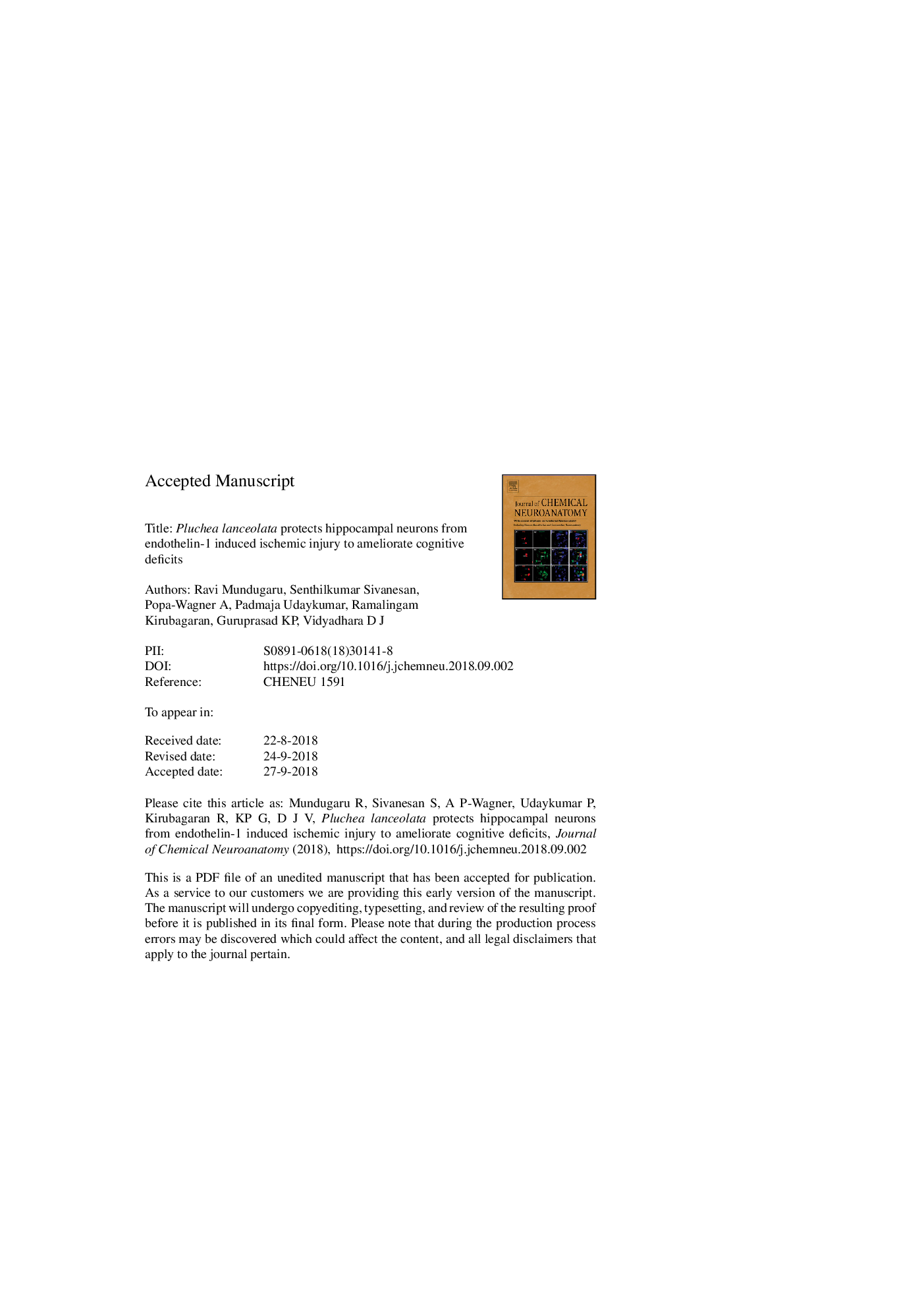| Article ID | Journal | Published Year | Pages | File Type |
|---|---|---|---|---|
| 11032739 | Journal of Chemical Neuroanatomy | 2018 | 33 Pages |
Abstract
Ischemic brain injury is one of the leading causes of death and disability, where lack of disease modifying treatment strategies make us rely on symptomatic relief. Treatment principles from traditional systems of medicine may fill this gap and its validation in modern medicine perspective is important to bring them to mainstream. Here, we evaluated the neuroprotective efficacy of Ayurvedic medicinal herb Pluchea lanceolata in treating ischemic hippocampal injury. Focal hippocampal ischemia was modeled in Wistar rats through stereotaxic intrahippocampal injection of endothelin-1 (ET-1). Post-surgery, hydroalcoholic extract of the rhizome of Pluchea lanceolata (HAPL) was administered orally, once in a day for 14 consecutive days to ischemic rats. There were two treatment groups based on the HAPL dosage; HAPL200 (200âmg/kg body weight) and HAPL400 (400âmg/kg body weight). Comparisons were made with the ET-1 ischemic rats which received only the vehicle, and the normal surgical control. Ischemic hippocampal injury led to severe cognitive deficits as evaluated by Morris water maze and open field test, along with locomotory dysfunction noted in actophotometer test. HAPL treatment significantly attenuated these behavioural deficits in a dose dependent manner. Loss of pyramidal cells and degenerative phenotype of shrunken hyperdensed soma with pyknotic nuclei in CA1 and CA3 hippocampal neurons in ischemia were reversed after HAPL treatment. We provide first evidence for loss of dendritic architecture in ET-1 induced focal ischemic hippocampal injury using Golgi impregnation, where HAPL could salvage the dendritic branching and intersections. Intriguingly, it enhanced the dentritic arborization beyond what is noted in normal rats. Ability of HAPL to reverse oxidative stress, especially through maintaining glutathione peroxidase levels and lipid peroxidation in ischemic condition evidences that it may exert neuroprotection through its antioxidant properties. Thus, Pluchea lanceolata and its constituents provide potential alternative/adjuvant treatment strategy for ischemic hippocampal stroke.
Keywords
MDATBARSMCAOET-1CATCA3CA1dendritic arborizationGSH-PxROSHydrogen peroxideIschemic brain injurycornu ammonis 3cornu Ammonis 1endothelin 1endothelin-1middle cerebral artery occlusionanalysis of varianceANOVAsoutheastSouthweststandard error of meanCNSSODSuperoxide dismutasecentral nervous systemNortheastnorthwestmalondialdehydeSEMH2O2HippocampusCatalaseCresyl violetglutathione peroxidaseReactive oxygen speciesLearning and memory
Related Topics
Life Sciences
Biochemistry, Genetics and Molecular Biology
Biochemistry
Authors
Ravi Mundugaru, Senthilkumar Sivanesan, Aurel Popa-Wagner, Padmaja Udaykumar, Ramalingam Kirubagaran, Guruprasad KP, D.J. Vidyadhara,
